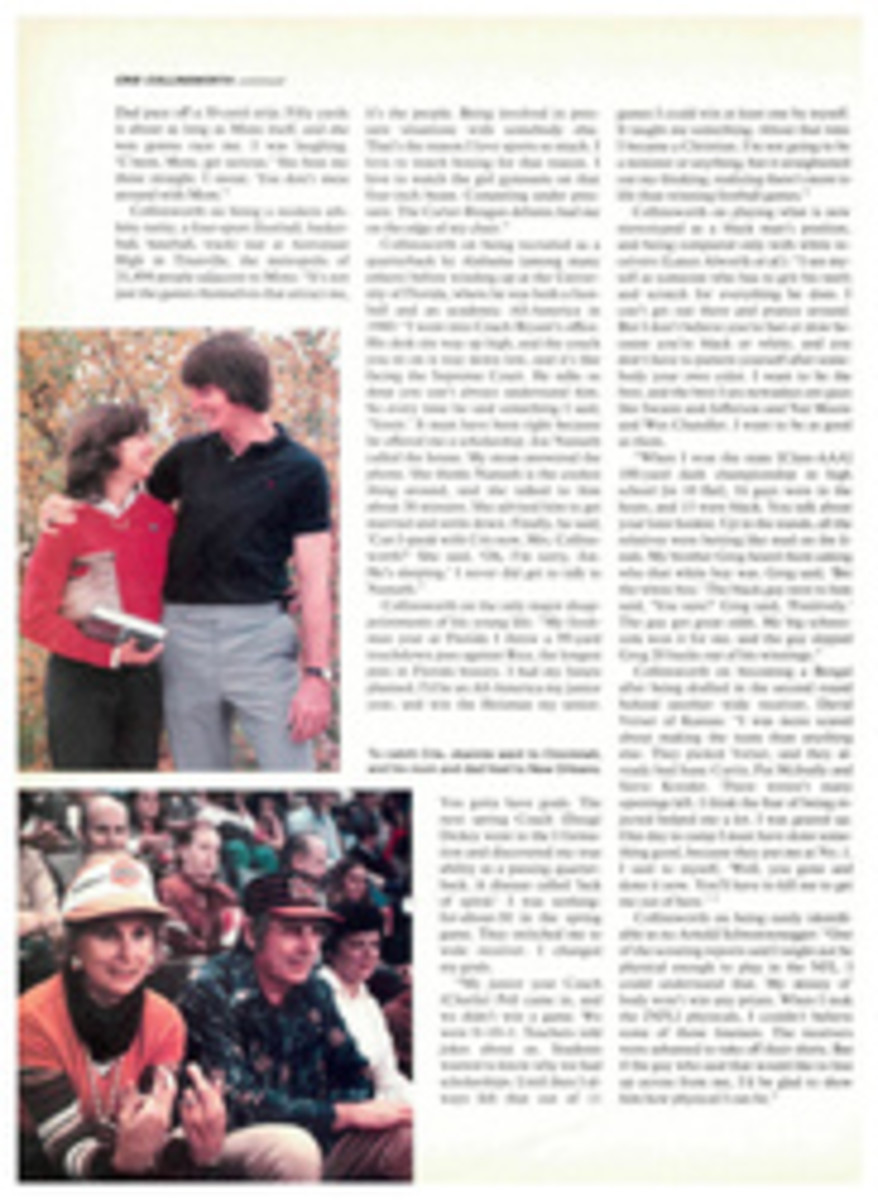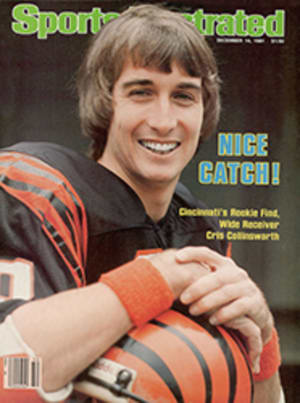
A LOT OF GOOD TEAMS FUMBLE WHEN IT COMES TO DECORATING THEIR HELMETS
The battered leather headgear of Rockne and Thorpe has evolved into today's colorful globelike helmet decorated with graphic wonders—some, of course, more wonderful than others. Originally designed merely to protect ears, the football helmet has lately acquired additional responsibilities. It is now also expected to identify, to dazzle, even to intimidate.
Despite pockets of stubborn resistance—consider the conservative headgear worn at Alabama and Penn State—the compulsion to put illustrations on helmets is epidemic, infecting every level of the game from peewee to pro. There are cowboys and Indians, flora and fauna, stars and stripes. It's an issue of such importance, in fact, that the New England Patriots invited fans to vote during the '79 season on the fate of their Continental soldier-cum-center. He was decisively reelected.
The esthetic results of all this heraldic hoopla have been predictably uneven, and have rarely corresponded in quality with the play of the wearers. The best and the worst graphics can be found right at the top. This unevenness is a little surprising, because the pros often consult pros on design matters, even if they look no further than NFL Properties, the licensing and merchandising arm of the league. Among unfortunate in-house customers we find the Giants, Bills and Bengals. Some teams have cooked up their own ideas and have had them executed by designers. The Dallas Cowboys travel under a star designed by President and General Manager Tex Schramm, while the New York Jets turned to staff film director Jim Pons for their logo.
In academia the approach is even more haphazard. Two universities, Texas and Arizona State, give credit to coaches for their helmet designs, while another, Brigham Young, points guiltily to its equipment manager. In South Carolina, Clemson hired a Greenville advertising agency and was rewarded with a vivid and original tiger's-paw print.
The best helmet decor, in my opinion, was not only the first to attract national attention, but was conceived by a player. Shortly after the Cleveland Rams moved to Los Angeles in 1946, Halfback Fred Gehrke produced the classic blue and gold horn design, and for instant recognition and pure design excellence, it hasn't been equaled, except perhaps by the Philadelphia Eagles' majestic silver wings. But despite widespread imitation by the likes of the Bison of Bucknell, horns on one's helmet are no guarantee of a successful design: Witness the limp cornucopia worn by the Minnesota Vikings. In fact, one should be wary of animal parts in general. The noble tiger skin has been corrupted by the Cincinnati Bengals this season into something that looks like a varicose pumpkin.
The embellishment of helmets follows one of three forms: a thematic design (horns, stripes); pictograms of animals, people or things (lions, pirates, oil derricks); and lettering.
There's no inclination here to rank the helmets—or, indeed, any acceptable standard for doing so. Still, the object of graphic design is to represent an idea quickly, emphatically and attractively. And there are basic principles that, for the visually aware, must push aside hometown chauvinism. The main one, and most often violated, is scale. How can a spectator clearly identify an emblem too small or too intricate to be deciphered even from the bench? Only telescopic vision or John Matuszak's helmet in your face could reveal what goes on inside the Oakland Raiders' shield.
The second most frequent failing is lack of clarity, whether of image or content. Wouldn't, for instance, Tampa Bay's Buccaneer be more comfortable in the Easter parade than on a pirate ship?
Possibly Cleveland has the worst case of ambiguity. What's a Brown, anyway, besides the name of that team's first coach? Whatever a Brown does turn out to be, it's unlikely to be orange, as are the Cleveland helmets. Ohio State seems to be graphically confused, too, with those gray, red and white helmets with the all but indecipherable buckeye stickers on them. But what do you expect, seeing as how buckeyes, the little nuts of the buckeye tree, are neither instantly recognizable nor especially impressive. These design difficulties are caused by a paucity of ingredients.
While it's hardly reasonable to expect a graphic image to inspire fear, respect, at least, should be within reach. Bulldogs (Georgia, Yale, Mississippi State) are rarely depicted, perhaps because they are considered to be too ugly or too lovable to garner respect. Similarly, the purported cuddliness of the Husky seems to exclude it from some schools' helmets (Connecticut, Washington, Northeastern). Oh, that Miami had shown such restraint instead of signing up that silly, hoop-jumping Dolphin. There's a design worthy of no respect, despite that animal's celebrated winning streak versus sharks.
Typography, seemingly the safest and most direct sort of helmet adornment, can suffer the same snags as more ambitious illustrative efforts. Script can be particularly weak at a distance, although fans of UCLA, VMI and Vanderbilt seem reasonably able to distinguish friend from foe. More agreeable by far are the lettered helmets of West Virginia, Texas A&M and Illinois. Each is clear, distinctive and handsome.
The most potent tool in the hands of the helmet designer is color. And what a weapon it can be! Crisp October sunlight can positively stun when reflected from shiny silver or gold; black is forever sinister; and red we know as the badge of valor, danger or blood.
So when heroes falter, then at least you can root for your favorite designer—with a loud locomotive for the unblemished golden domes of Notre Dame, which for a brief time experimented with shamrocks and wisely reconsidered, or a quietly tasteful sis-boom-ah for Nebraska's very discreet "N."
ILLUSTRATION
DONALD GEISZ
Cincinnati
ILLUSTRATION
DONALD GEISZ
West Virginia
ILLUSTRATION
DONALD GEISZ
Los Angeles
ILLUSTRATION
DONALD GEISZ
Clemson

